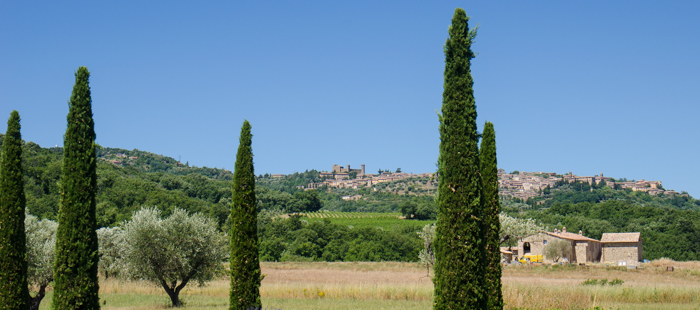
Immersing ourselves in Italy’s best wine regions, as we do on our Italiaoutdoors Walk and Wine tours, involves discovering these wines from many perspectives – the terroir, the local history and culture, the producers and , of course, a thorough sampling of the wines themselves. I recently wrote a brief article on the distinctive terroir of Brunello, and the important role it plays in distinguishing these unique wines. Here I share a bit about the history of Montalcino, and its evolution from remote rural village to a town that is today internationally recognized as the center of production of one of the world’s most sought-after wines.
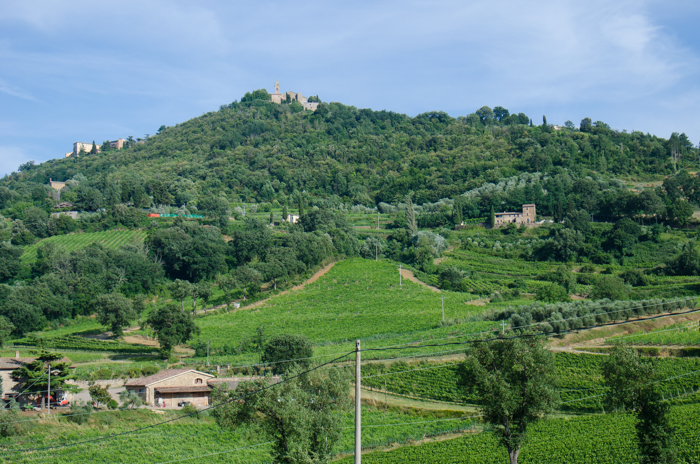
A hilltop town in the Siena province of Tuscany, Montalcino was first settled by the Etruscans. The town supposedly takes its name from the variety of oak tree that once covered the hill. During the late Middle Ages, Montalcino became a local center of commerce, owing to its location on the Via Francigena, the main road followed by pilgrims traveling between France and the Holy City. During this time, Montalcino was known for its tanneries and for high-quality leather goods. Wooden wares were also produced, hand crafted from the oak forests that surrounded the town.
At this time, Europe saw the introduction of the sharecropping system, mezzadria in Italian, in which a local farmer tends a plot of land owned by a wealthy landowner, with the landowner receiving anywhere from one-third to two-thirds of the production. The farmer would feed his family on what remained, so his small plot of land would contain many different crops, with the goal of growing as much as possible throughout the year. Grape vines were cultivated, but they would be grown among other crops, not in a vineyard solely dedicated to vines. A local wine was made, a sweet white wine called Moscadello.
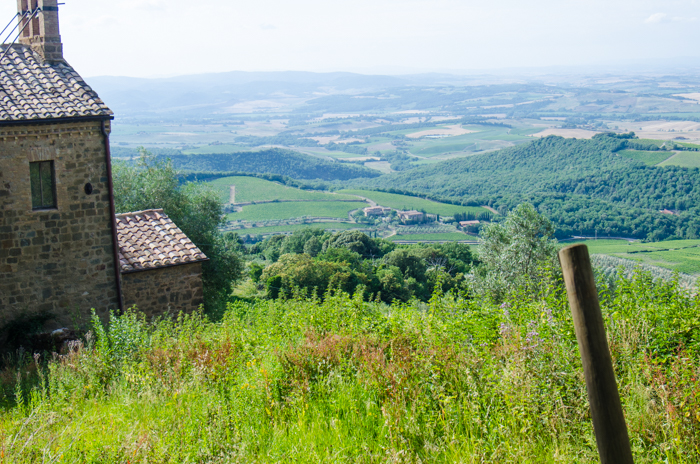
In 1260, Montalcino was annexed to Siena, and thereafter was affected by the ongoing conflict between Siena and Florence. In 1555, Siena was conquered by Florence under the rule of the Medici family and the rulers and leading citizens of Siena along with their French Allies, took refuge in Montalcino. The city held out for 4 years, until a peace accord was reached, but the siege took its toll and left the city impoverished. The city remained part of the Duchy of Tuscany until reunification of Italy in 1861. Around this time a few wealthy local landowners in the area started experimenting with the production of a red wine. Among them was a pharmacist named Clemente Santi.
Wine production was very different in the mid-1800s. As mentioned earlier, grapes were not cultivated in their own vineyards, with careful trellising; they were interspersed with other crops and trellised to whatever was nearby. Grapes were harvested quite early, when more acidic and not fully ripe, to thwart thieves and avoid any crop loss due to inclement fall weather. After harvest, grapes were not de-stemmed before fermentation, so red wines were rough and bitter. White wines were blended into reds to “mellow” it into something more drinkable. Wine was produced in old barns or other outbuildings with minimal attention to sanitation and no temperature control.
Clemente Sandi was an outspoken critic of the winemaking techniques of that time, including the early harvest and the use of mixed fields of crops. He planted the first real grapes-only “vineyard” in Montalcino, and in 1869 won two silver medals for his red wine. But perhaps his greatest contribution was his grandson, Ferruccio Biondi Santi, who built on Clemente’s discoveries to create the modern-day Brunello.
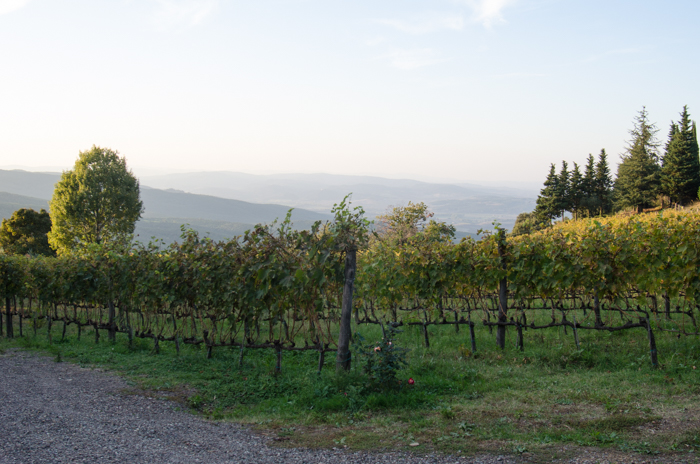
By the mid 1870’s, growers in the area were beginning to produce wines solely from the local red grapes, called “Brunello”, little brown ones. Ferruccio focused heavily on the Brunello variety, identifying the best performing plants on his estate. At the time, both powdery mildew as well as the louse phylloxera threatened vineyards across the country. Ferruccio identified the plants most resistant to these plights and replanted his vineyards with them. He eventually planted vineyards with his Brunello shoots grafted onto US sourced root stock, which is impervious to the phylloxera louse. Other innovations included training systems that were lower to the ground to better capture heat from the earth, and higher planting density to force plants to compete for nutrients and develop deeper root growth. He adopted de-stemming for his all-red grape based wines, longer fermentation on the skins, and began barrel aging and strict quality control. These approaches produced wines with more structure and stability, allowing the wine to be exported to far-away destinations. Fans of Biondi Santi’s Brunello increased, and it eventually became the most expensive wine produced in Italy.
World War I saw a huge decline in the market for premium wines, and only a few producers survived. Ferrucio’s son Tancredi took over the estate upon his return home from the war. Just as the local wine economy began to recover, phylloxera hit again in the 1930s, destroying almost all the vineyards in Montalcino. And again, as recovery from this began, World War II started, once more crushing the market for these exclusive wines.
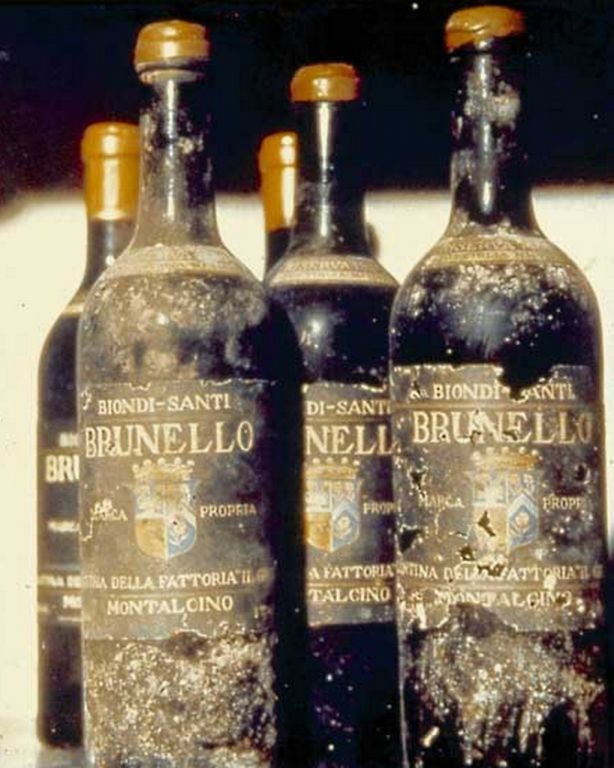
During this war, the front passed right through Montalcino, laying waste to the countryside. Any wine discovered in local cellars by desperate troops was quickly consumed. Tancredi and son Franco Biondi Santi took many years worth of their Riserva Brunello wines and walled them up in a remote corner of their cellars, hiding them from the forces passing through. Unearthed years later, the rediscovery of these wines provided the ultimate proof of the longevity of Brunello – they are still amazing.
Following the war, production slowly recovered. In 1966, Brunello became one of the first registered DOCs in Italy, and the following year 13 producers were back in business, producing 150,000 bottles that year. in 1969, a state dinner held by the Italian Embassy in London put Brunello front and center on the world-wide stage. Biondi Santi’s 1955 Brunello was served, and was a sensation. The notoriety brought along a nice increase in price for the wine, and an investment in the expensive cellars needed to house a wine that requires 4 years of aging in wood didn’t seem so ludicrous. The early 70s saw a huge increase in the number of acres planted for Brunello.
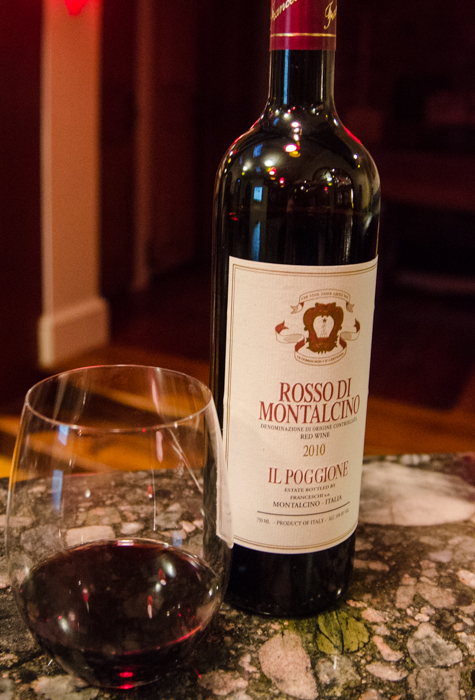
During this same time, the Consorzio del Vino Brunello di Montalcino was founded to safeguard the reputation and quality of Brunello. Many members had just planted new vineyards and were otherwise expanding their operations, and wanted a more immediate revenue stream. They were interested in a wine they could sell earlier, especially one they could sell with the prestigious “Brunello” as part of it’s name. They won in the short term, selling this younger wine under the name “Vino Rosso dai vigneti di Brunello” (red wine from the Brunello vineyards), but today this wine is known as Rosso di Montalcino.
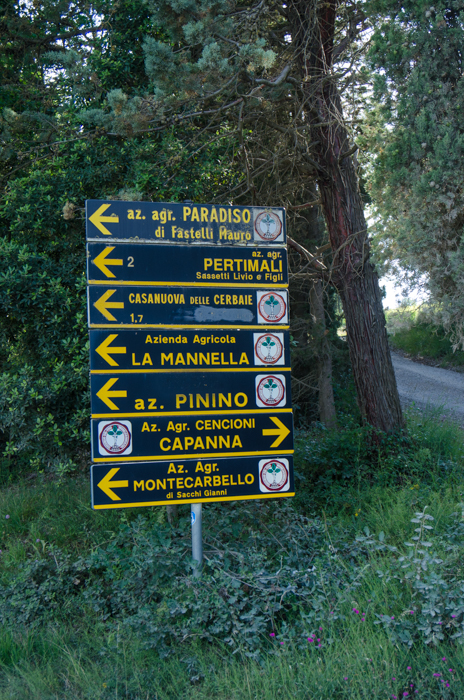
In the 80s and 90s demand for Brunello outstripped supply. Vineyard locations and acreage were strictly regulated by the Consorzio, but they were under constant pressure to allow new producers to enter and existing producers to expand. A devastating frost in 1984 destroyed many of the local olive orchards. Farmers looking to rebuild faced a choice – replant olive trees, that don’t produce for 10 years, or plant vines, which produce in 4. As you can guess, many of those who elected to rebuild than to sell to hungry outsiders chose the later.
Large producers from outside Montalcino wanted to invest here, including Antinori, Frescobaldi, and the Mariani family from New York, who started Banfi. In 1997 the Consorzio opened up the Brunello registry of vineyards and expansion occurred, including vineyards at lower elevations which are hotter, and produce very different wines – higher in alcohol, less acidity, and typically not as age-worthy. These newer ‘outside’ producers, looking to achieve the recognition and status just being awarded to Super Tuscans that were all the rage, modeled their operations after the French style of wine-making – international varietals, aging in smaller French barriques rather than the traditional large botti, use of outside consultants who favor the French/Bordeaux style.
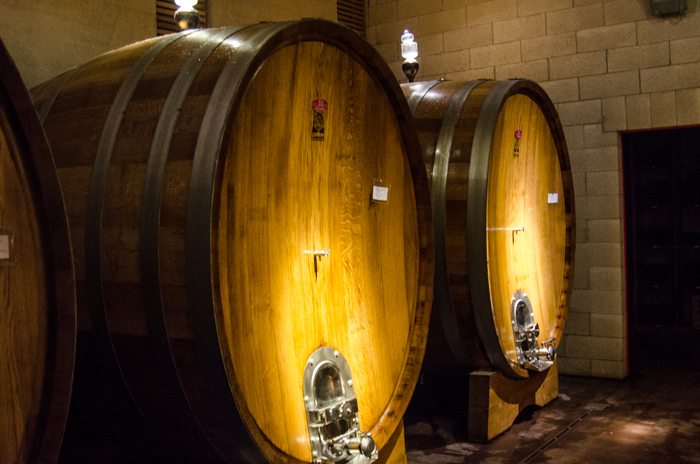
Critics, finding Bordeaux-style wines familiar territory, loved these wines, and gave them high marks, much higher than the traditional style Brunello. But temperamental Sangiovese can be weighed down with the new oak in the smaller barrels, and are less vibrant, less cherry, lack minerality. After only a few years of aging, the traditional Brunello wines are just beginning to come into their own, while some “new” styled Brunello were already past their prime. In 2008 the ultimate betrayal of the traditional Brunello; several large producers were accused of blending other grapes into their wines, in a scandal called Brunellogate. Their production was confiscated while each were investigated and authenticity confirmed. Post Brunellogate, the Consorzio has had several internal debates on whether or not to allow other grapes to be blended into Brunello, but thankfully they have remained true to their tradition – today Brunello di Montalcino still proudly maintains their unique identity as the only 100% Sangiovese wine in Italy, Sangiovese in purezza.
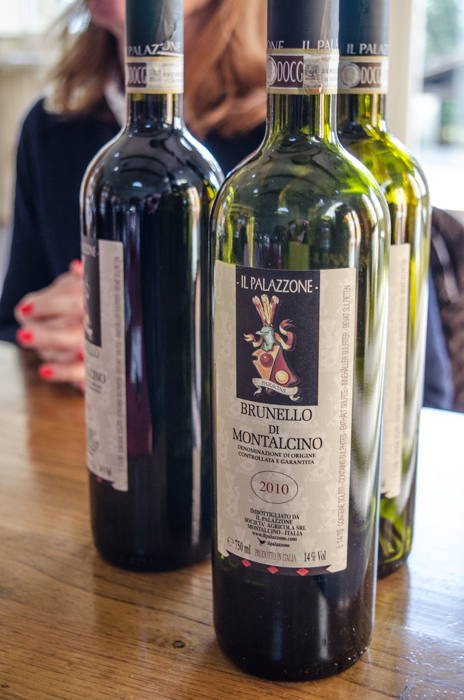
Today, visitors can experience this history by tasting the wines – sample a Brunello made in a traditional style, aged in large botti, and compare to a newer style aged for a time in barrique. Try producers from the original, higher altitude vineyards near the town itself, and compare to others from newer vineyards in the southwest, or in the southeast near Abbazia Sant’Antimo. Sample a blend of Sangiovese from Montalcino mixed with other grapes, which can be sold under the newer Sant’Antimo DOC. For our tour guests, our morning explorations through this lovely countryside provide us the knowledge and first-hand experience to understand and appreciate these wonderful wines. And we thought we were just having fun 🙂
Many thanks to Esther Jurgens at Vino Vistas, who has introduced many of our groups to the secrets behind Brunello wines. For those who wish to learn more about Brunello, I highly recommend “Brunello di Montalcino” by Kerin O’Keefe.

Pingback: Walk and Wine in Tuscany - Il Palazzone | Italian Food, Wine, and Travel